

Hardware Store Explosion Claims the Lives of Three Career Fire Fighters - New York
SUMMARY
On June 17, 2001, a 50-year-old male career Fire Fighter (Victim #1), a 46-year-old male career Fire Fighter (Victim #2), and a 40-year-old male career Fire Fighter (Victim #3) died while performing interior suppression and exterior ventilation activities when an explosion occurred in the cellar of a hardware store, causing a structural collapse. Victim #1 and Victim #3 were removed from the debris after the collapse and transported to a local hospital where they were pronounced dead. Victim #2 was recovered from the cellar approximately 4 hours later and was pronounced dead at the scene. NIOSH investigators concluded that, to minimize the risk of similar occurrences, fire departments should
Additionally,
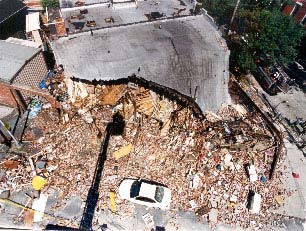
Aerial Photo from Side 2
INTRODUCTION
On June 17, 2001, a 50-year-old male career Fire Fighter (Victim #1), a 46-year-old male career Fire Fighter (Victim #2), and a 40-year-old male career Fire Fighter (Victim #3) died while performing interior suppression and exterior ventilation activities when an explosion occurred in the cellar of a hardware store, causing a structural collapse. On June 18, 2001, the International Association of Fire Fighters (IAFF) and the United States Fire Administration (USFA) notified the National Institute for Occupational Safety and Health (NIOSH) of this incident. On July 9, 2001, three Safety and Occupational Health Specialists and the Team Leader of the Fire Fighter Fatality Investigation and Prevention Program investigated this incident. Interviews and meetings were conducted with the Chief of the Department, the Chief of Safety, the Safety Battalion, fire fighters from the department who were on the scene of this incident, the presidents and representatives of the Uniformed Firefighters Association (UFA) and the Uniformed Fire Officers Association (UFOA). The incident site was visited and the scene was photographed. Copies of witness statements, training records, standard operating procedures (SOPs), dispatch logs, fire/arson investigation report, building blueprints, video footage, and a map of the fire scene were reviewed.
This career department consists of 11,500 uniformed fire fighters. The department serves a population of 8,000,000 in a geographic area of approximately 321 square miles.
Structures
Two structures were involved in this incident. Also, both buildings were interconnected on the first floors as well as the cellars. Both structures were built prior to 1930 of ordinary construction, and were two stories in height, each with a full cellar. Building 1 measured 2035 square feet and was triangular in shape. Building 2 measured 1102 square feet and was rectangular in shape. Building 1 and Building 2 shared a common or party wall and were interconnected on the first floor and the cellar. Building to building access in the cellar was through a fire door. Note: The fire door was blocked open to allow free movement between the cellars which were used for storage. The hardware stored occupied the first floor and cellars of both buildings. Building 1 had two apartments on the second floor. Building 2 had an office and storage space on the second floor. Note: A third uninvolved building was attached to the west side of Building 2 (Figure #1). The flat roof system sheathing consisted of 5/8-inch plywood covered by felt paper and rubber roof membrane. The foundation was constructed out of stone and mortar. The support system was a combination of steel masonry posts/lolly columns and wooden support beams.
Equipment
Additional units were dispatched; however, only those units directly involved in the fatal event are discussed in the investigation section of this report.
Battalion 49 [Battalion Chief (Initial Incident Command), aide]
Battalion 45 [Battalion Chief (rear sector command), aide]
Division 14 [Deputy Chief (Incident Commander), aide)
Special Operations Command (Battalion Chief, aide)
Engine 260 (Lieutenant, four fire fighters, chauffeur)
Engine 262 (Lieutenant, three fire fighters, chauffeur)
Squad 288 (Captain, four fire fighters, chauffeur)
Engine 312 (Lieutenant, three fire fighters, chauffeur)
Engine 316 (Lieutenant, three fire fighters, chauffeur)
Squad 041 (Lieutenant, four fire fighters, chauffeur)
Ladder 115 (Captain, four fire fighters, chauffeur)
Ladder 116 (Captain, four fire fighters, chauffeur)
Ladder 117 (Lieutenant, four fire fighters, chauffeur)
Ladder 163 [Lieutenant, four fire fighters, chauffeur (Victim #3)]
Rescue 4 [Captain, four fire fighters (Victim #2), chauffeur (Victim #1)]
Accelerants Present
The hardware store had a considerable volume of hazardous/flammable materials, stored in the cellars of both buildings (Photo 3):
| Building 1 | |
|---|---|
| Material | Quantity |
| Propane (14 oz.) Mapp Gas Oxygen |
142 Cylinders 27 Cylinders 3 Cylinders |
| Building 2 | |
| Material | Quantity |
| Acetone Denatured Alcohol E-Z Alcohol Spray Paint Laquer Thinner Methyl Ethyl Ketone Minteral Spirits Naphtha Paint Thinner Toluene Turpentine Xylene Propane (14 oz.) |
6-12 Gallons 24 Gallons 12 Gallons 350 Cans 12-24 Gallons 24 Gallons 24 Gallons 24 Gallons 24 Gallons 4 Gallons 24 Gallons 4 Gallons 6 Gallons |
Training
The department requires all fire fighters to complete a 13-week Probationary Fire Fighters School. Candidates must be Certified First Responders to become probationary fire fighters. Probationary fire fighters are instructed in hydraulics and learn the basics of fire suppression systems and fire-fighting tactics.
Victim #1 had 27 years of experience and had completed an extensive list of training courses which included: Hazardous Material Operations, Ladder Company Chauffeur, and Fire Suppression and Control.
Victim #2 had 14 years of experience and had completed an extensive list of training courses which included: Hazardous Material Operations, Building Construction and Firefighter Safety, Tactical Forcible Entry, Tactical Engine Company Operations, Tactical Ladder Company Operations, Tactical Roof Operations, Tactical Search Operations, Engine Company Chauffeur, and Fire Suppression and Control.
Victim #3 had 11 years of experience and had completed an extensive list of training courses which included: Tactical Forcible Entry, Chain Saw: Ladder, Tactical Search Operations, Tactical Mask Confidence, Tactical Private Dwelling Fire, Tactical Roof Operations, Hazardous Material Operations Level, Ladder Company Chauffeur, and Fire Suppression and Control.
Personal Protective Equipment
At the time of the incident, all three victims were wearing their full array of personal protective clothing and equipment, consisting of turnout gear (coat and pants), helmet, Nomex ® hoods, gloves, boots, and a Self-Contained Breathing Apparatus (SCBA) with a Personal Alert Safety System (PASS) integrated into the air pack.
Weather
The weather conditions at the time of the incident included a relative humidity of 84%, an ambient air temperature of 69.8° F, wind speed of 13.8 mph, and barometric pressure of 29.86 Hg.
INVESTIGATION
On June 17, 2001, at 1420 hours, Central Dispatch received a call from a local resident of a reported fire in a hardware store. At 1421 hours Central Dispatch assigned the first-alarm companies. At approximately the same time crews cleared the scene of a previous call approximately seven blocks away and were added to the alarm. Battalion 49 cleared Squad 288 from the previous call and notified Central Dispatch that they were adding their units to the structure fire call. Battalion 45 was assigned as the first-due Chief, and Engine 260 and Ladder 163 were assigned as the first-due companies. However, due to the proximity of the previous call, Squad 288 was stopped by a civilian for a verbal alarm and was the first unit to arrive on the scene at 1422 hours.
A civilian led the Captain from Squad 288 through a downstairs apartment in Building 3 to a cellar door in the Exposure 3 side of Building 2 (see Figure #1). The Captain heard the fire crackling behind the cellar door and transmitted to Central Dispatch a working structure fire. Note: The fire origin was a flammable liquid (gasoline) that was accidentally spilled outside the rear security door of the cellar on Exposure 3. The gasoline traveled underneath the door and its vapors were believed to be ignited by the pilot light of a hot water heater located inside the cellar of Building 2. When the Captain returned to Exposure 1, members of Squad 288 were pulling a 1¾-inch handline off their rig to the front of the structure. The Captain from Squad 288 informed them that the fire was in the hardware store and ordered them to stretch a 2½-inch handline. The Roof Man from Squad 288 took a saw and performed forcible entry on the security gates that protected the two front entrance doors.
Between the hours of 1425 and 1430 Battalion 49, Engine 262, Engine 260, Ladder 116, Ladder 117, Ladder 163, Rescue 4, Battalion 45 and Engine 312 arrived on the scene. Battalion 49 assumed Incident Command (IC) and began his walk-around to check for conditions and fire extension throughout the structure. As the IC was walking down the Exposure 2 side, a civilian informed the IC that fire fighters would probably have better access to the fire through the rear of the structure, the Exposure 3 side. The IC instructed Engine 262 to stretch a handline to the rear of the structure for a possible entry into the cellar through a door on the Exposure 3 side. The cellar door was accessed through the security gate between the Exposure 2 and Exposure 3 side (see Figure #1).
The IC assigned Battalion 45, the all-hands Chief, as rear sector-command over forcible entry on the Exposure 3 side. The Lieutenant from Ladder 163, Ladder 163 Irons, and Ladder 163 Can, along with a member of Rescue 4, and Ladder 117 Outside Vent (OV) began forcing the reinforced steel security doors. Battalion 45 ordered Engine 262 to stretch a 2½-inch line to the door. While waiting for the door to be forced, the officer from Engine 260 ordered his crew to stretch another 2½-inch line.
Ladder 116 Roof (with the saw) and the OV raised a portable ladder to the roof on the Exposure 1 side. Ladder 116 Can and members from Ladder 117 raised a 24-foot extension ladder to a window and conducted a quick search of the second floor. The OV and Ladder 163 Roof went to the roof in their bucket to perform vertical ventilation. Ladder 163 Roof exited the bucket and met up with Ladder 117 Roof, Rescue 4 Roof and the crew from Ladder 116 to perform ventilation. Note: Ladder 163 Roof noted that heavy white smoke was pushing from the chimney. The ventilation crews removed the panes of glass from the skylights.
At approximately this time, Squad 288 had completed forcible entry on the front doors (Exposure 1 side) of the hardware store and encountered a medium smoke condition with no heat on the first floor. Squad 288 located an interior door that opened to a 6-foot-long landing which led to a set of stairs going to the cellar. The Captain from Ladder 116 and the officer and a fire fighter, with a thermal imaging camera (TIC) from Rescue 4, entered the landing to assess the conditions. They encountered heavy black smoke and no flames. The TIC revealed heat in the walls around the stair enclosure and sections of the floor. The stairs had a plywood slide over them that was covered with materials. The Captain from Ladder 116 removed the plywood and did not feel much heat on the walls with his bare hand. The IC entered the hardware store and Squad 288 informed him that the fire was behind the cellar door on the Exposure 3 side. Squad 288 was ordered to hold this position so that an attack could be made from the Exposure 3 side without opposing hose lines. During this time Squad 288 was holding their position at the door, and the door blew open a few times with a gust of blue flame. Note: The IC and members of Squad 288 heard noises coming from the cellar that sounded like electrical arcing. The sound progressively got louder and stayed constant.Ladder 115 arrived on the scene at approximately 1435 hours and was assigned as the rapid intervention team (RIT or Fast Truck). At approximately 1440, the Captain from Ladder 115 walked by Exposure 2 to check on the progress at Exposure 3. During this time, he noticed the Chauffeur from Ladder 163 (Victim #3) and the Chauffeur from Rescue 4 (Victim #1) conducting venting operations on the cellar windows on the Exposure 2 side (see Figure #3). The crew removed the steel bars from the window with an extrication tool and vented the first cellar window, which was toward the rear of the structure. A fire fighter from Engine 262 looked into the window and did not see any fire. He then assisted stretching another handline while the crew began venting the next cellar window closest to Exposure 1.
A fire fighter from Squad 288 and a fire fighter from Rescue 4 (Victim #2) then forced a door in Building 2 to gain access to the second-floor office and storage area (see Figure #1). The fire fighters conducted a search of the second-floor, which had light smoke conditions. The fire fighter from Squad 288 then returned to the first floor to assist on the 2½-inch line into the Exposure 1 side.
The Deputy Chief from Division 14 arrived on the scene at approximately 1442 hours and proceeded to Exposure 1 to obtain a briefing from Battalion 49. Using hand tools, a power saw, and the extrication tool, the crew at the rear had just opened the reinforced steel security door approximately 18 inches.
Battalion 45 and the Lieutenant from Ladder 163 entered the cellar through the narrow opening to assess the condition and the entry and exit route. The smoke condition was light with no heat and no distinctive smells were present. The steel-over-wood door was reinforced on the inside with an iron bar gate. The determination was made to remove the door to provide a clear entry and exit route while operating in the cellar. Battalion 45 notified Battalion 49 that they would have good access in the rear once the door was removed.
Battalion 49 checked the air supply of Squad 288 and decided on an attack down the cellar stairs. At this time, Battalion 49 did not hear any more arcing sounds from the cellar. While the rear door was being removed, the IC stepped into the street to ensure Engine 312 stretched a 2½-inch line to Exposure 1 as backup to their attack from the first floor of Exposure 1. The Special Operations Command (SOC) Chief had just arrived on the scene and was being briefed by the IC in front of the Exposure 1 entrance. There was a radio transmission of an unknown or lacquer odor followed by an acknowledgment of the same smell. The explosion took place within seconds of this transmission.
The IC and the SOC Chief were blown into the street by the blast from the explosion. Battalion 45 and the forcible-entry crew on the Exposure 3 side were blown from the doorway into the backyard. The explosion collapsed the Exposure 2 wall, burying the Chauffeur from Ladder 163 (Victim #3), the OV from Ladder 116, and the Chauffeur from Rescue 4 (Victim #1), who were conducting venting operations (see Photo 1). Squad 288 and additional crew members on the first floor were lifted off their feet, and they landed in the rubble created by the explosion, which led them to believe they were blown into the cellar. They were able to exit through the debris of the Exposure 2 wall (see Photo 2). Victim #2 radioed that he was trapped in the cellar under the stairs. Note: It is believed that Victim #2 was on the first-floor landing at the top of the stairs to the cellar in Building 1 and was blown into the cellar down the stairway by the explosion (see Photo 1).
A personal accountability report (PAR) was conducted and it was determined that four members were missing. The OV from Ladder 116 was found buried under brickwork. The store sign had fallen across his chest, shielding him from direct contact with the bricks. He was removed and transported to a hospital by ambulance. Crew members began removing the bricks and rubble on the Exposure 2 side by hand to search for Victim #1 and Victim #3. They were both found after approximately 25 minutes and transported to a local hospital where they were pronounced dead. Fire fighters cut a hole in the floor near the stairs of Building 1 to attempt rescue of Victim #2 by placing a hand ladder into the cellar. Crew members were forced off the ladder several times due to the intense fire and heat. Fire fighters took about one hour to breach the Exposure 4 cellar wall of Building 2 from Building 3. Victim #2 was recovered by a member of a squad after descending the portable ladder placed into the stairway hole earlier in the operation. Victim #2 was found near the base of the cellar stairs and was pronounced dead on the scene.
CAUSE OF DEATH
The cause of death for Victims #1 & #3 was listed as massive blunt force trauma. The cause of death for Victim #2 was listed as asphyxia due to smoke inhalation.
RECOMMENDATIONS AND DISCUSSION
Recommendation #1: Fire Departments should ensure that pre-incident plans are updated and used on mercantile occupancies. 1
Discussion: NFPA 1620 states that "Pre-incident planning in a mercantile occupancy involves not only the emergency responders, but administrators, section or department supervisors, and other staff members." The primary purpose of a pre-incident plan is to help responding personnel effectively manage emergencies with available resources. Pre-incident planning involves identifying the protection systems, building construction, contents, and operating procedures that can impact emergency operations. The construction of the building in terms of the size of the building (both vertical and horizontal), building features (fire walls, fire barriers, roofs, and floors), access points, areas where products of combustion could spread due to a lack of structural barriers (e.g., stock areas), and building services, should be determined.
Most occupancies present an ever-changing environment making ongoing maintenance of the pre-incident plan as critical as the original development of the plan. Where conditions indicate that a change in a pre-incident plan is warranted, the plan should be updated and distributed to the appropriate persons and agencies.
A system to utilize the pre-incident plan should be designed to allow access to the plan, or a summary with key elements of the plan, while in route and during the incident. Some supplemental detailed information such as building plans can be kept in a lock box or other secured area.
Recommendation #2: Fire departments should ensure that fire fighters from the ventilation crew and the attack crew coordinate their efforts. 2, 3
Discussion: Fire can quickly spread upward into the structure, causing potential problems such as a flashover, a backdraft, or an explosion. An explosion is the rapid ignition of a combustible gas/air mixture that results in shock waves, structural collapse, and heat release. Ventilation timing is extremely important and must be carefully coordinated between both fire attack and ventilation crews. Ideally, ventilation should occur just prior to interior crews advancing their hoselines. Proper venting of heat, smoke, and combustible gas/air mixtures from buildings can reduce the possibility of dangerous situations that confront fire fighters.
Recommendation #3: Fire departments should ensure that fire fighters are trained to know the hazards associated with cellar fires and the precautions that can be taken to reduce serious injury. 3
According to Dunn, "Confinement increases the chances of combustible gas explosion. A cellar is the most confined space in a building because there are fewer windows and doors leading to fresh air. The chance of an explosive mixture developing there when gas escapes is increased. Also, there are many combustible liquids and gases present that can form an explosive mixture."
Additionally, "A firefighter can reduce his chances of serious injury when a cellar explosion is anticipated by these precautions: 1. Stand clear of any windows that may suddenly explode outward. 2. Avoid standing near the entrance opening that will vent the pressure or shock wave of the cellar explosion. 3. Do not use a cinder block or masonry wall for protection against the force of the explosion. 4. Most important, wear all protective clothing–helmet, mask, gloves, boots, and turnout pants and coat. Even if a firefighter survives the explosion shock waves in a cellar, there will be a flash fire of extremely high temperature, created by the rapid ignition of combustible gas."
Recommendation #4: Municipalities and building owners should consider requiring and modifying older structures to meet new building codes and standards to improve safety of occupants and fire fighters. 4
Discussion: There are building codes and standards which are used as guidelines for new building design and construction. However, before municipalities adopted or enforced specific codes and standards, many buildings were designed and constructed without incorporating such standards. New or improved codes have been established which can improve the safety of existing structures. Sprinkler systems are one example of a safety feature that can be retrofitted into older structures. It is proven that sprinkler systems reduce the loss of property and life. There is also a strong possibility that sprinklers could reduce fire fighter fatalities, since they contain, and even extinguish, fires prior to the arrival of the fire department. Sprinklers are currently the most proactive fire safety approach in building construction. The structure involved in this incident did not incorporate a sprinkler system.
Recommendation #5: Building owners and/or fire departments should consider placing specific building construction information on an exterior placard. 5
Discussion: Information regarding the construction of the building is very valuable to fire fighters if a fire should occur. The information could provide fire fighters with such information as roof type (lightweight truss, bowstring, etc.), roof materials (metal, wood, etc.), roof loads (HVAC units, displays, etc.), sprinkler system(s), standpipe location, utilities (gas or electric), occupancy, occupancy hours, chemicals on site, pressurized cylinders, contact numbers, and the interior floor layout. This information could save the IC time when planning the fire attack. Additionally, the information would provide fire fighters with important information that they might not otherwise have access to.
Recommendation #6: Building owners should follow guidelines of the local authority having jurisdiction regarding the storage of hazardous/flammable materials and ensure that all existing safeguards are operational. 6, 7
Local codes are adopted or developed to safeguard against the loss of lives and property to the specific conditions that can be found throughout an area. In this incident, the city had developed rules prohibiting the storage and use of propane or liquefied petroleum gases (LPG) below grade. At a minimum, there were 142 14 oz. cylinders stored in the cellar area under Building 1 and Building 2. The fire door in the common or party wall that provided cellar level access between Building 1 and Building 2 was blocked open. Building owners should adhere to guidelines set forth by the local authority having jurisdiction regarding the storage of hazardous/flammable materials. They should also ensure that safeguards such as a fire door are maintained and operational. If the fire door was operational, it may have provided additional time for the protection of the cylinders of propane, mapp gas and oxygen that were being stored in the cellar of Building 2.
REFERENCES
INVESTIGATOR INFORMATION
This investigation was conducted by Richard W. Braddee, Team Leader; Tom P. Mezzanotte, Mark McFall, and Jay L. Tarley, Safety and Occupational Health Specialists, Division of Safety Research, NIOSH. The report was written in final form by Jay L. Tarley, Safety and Occupational Health Specialist.
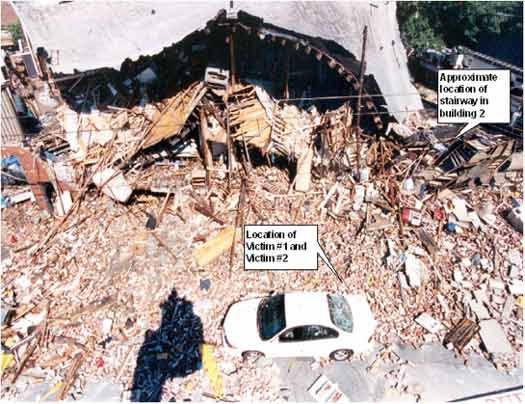
Photo 1. Collapse of Building from Side 2
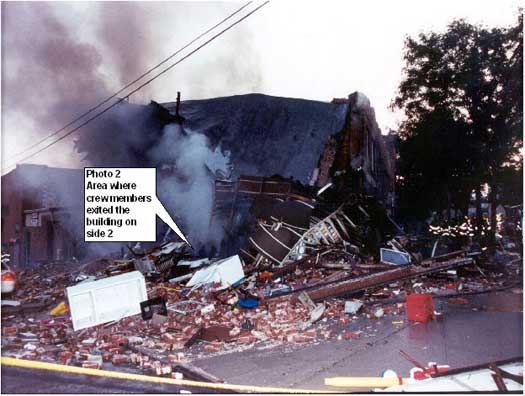
Photo 2. Exit Location from Side 2
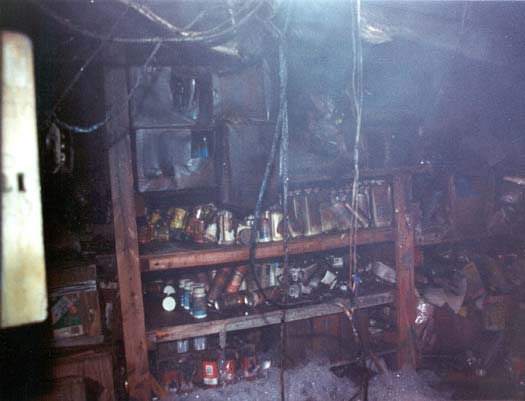
Photo 3. Example of Hazardous/Flammable Materials Stored in Cellar
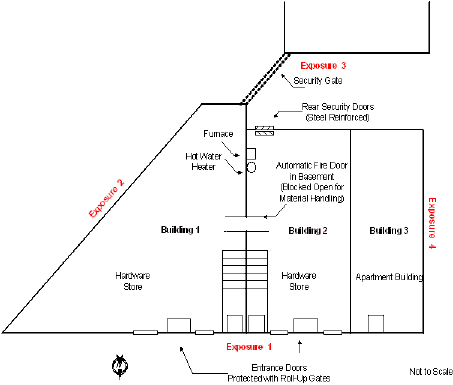
Figure 1. Aerial View of Building Layout

Figure 2. Aerial View of Engine Layout
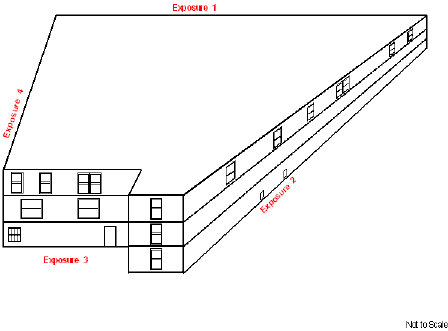
Figure 3. Three Dimensional View of the Structure
Return to Fire Fighter Homepage
This page was last updated on 02/27/03